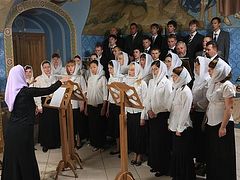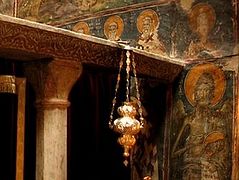Bogotá, Colombia, December 13, 2019
The ancient and sacred Orthodox art of Byzantine chant was honored on Wednesday by being included in the UNESCO List of the Intangible Cultural Heritage of Humanity. The move was jointly proposed by Greece and Cyprus.
The statement announcing the recognition notes that Byzantine chant has existed for more than 2 millennia and is intimately linked with the spiritual life of the Orthodox Church:
As a living art that has existed for more than 2000 years, the Byzantine chant is a significant cultural tradition and comprehensive music system forming part of the common musical traditions that developed in the Byzantine Empire. Highlighting and musically enhancing the liturgical texts of the Greek Orthodox Church, it is inextricably linked with spiritual life and religious worship. This vocal art is mainly focused on rendering the ecclesiastical text; arguably, the chant exists because of the word (‘logos’), since every aspect of the tradition serves to spread the sacred message. Passed on aurally across the generations, its main characteristics have remained over the centuries: it is exclusively vocal music; it is essentially monophonic; the chants are codified into an eight-mode or eight-tone system; and the chant employs different styles of rhythm to accentuate the desired syllables of specific words. Though the Psaltic Art has always been linked to the male voice, women chanters are common in nunneries and participate in parishes to some extent. In addition to its transmission in church, the Byzantine chant is flourishing due to the dedication of experts and non-experts alike – including musicians, choir members, composers, musicologists and scholars – who contribute to its study, performance and dissemination.
“Byzantine chant is a way of life,” says Fr. Nicolaos Lympourides, the Director of the School of Byzantine and Traditional Music of the Holy Metropolis of Limassol, in the video included in UNESCO’s announcement.
“We carry it from our childhood and we preserve it as long as we live. It accompanies our lives until we die,” he notes.
Watch the full video below:
Also enjoy the video created by the Cyprus National Commission for UNESCO in collaboration with the UNESCO Chair at the University of Nicosia and the University of Nicosia Mediazone for its proposal towards recognizing Byzantine chant as an important element of cultural heritage.
The Serbian Orthodox tradition of the Slava, or the family’s patron saint’s day, was added to the list in 2014.





